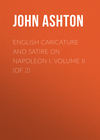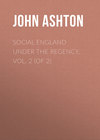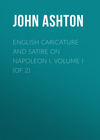Kitabı oku: «The Devil in Britain and America», sayfa 10
CHAPTER XIV
Legislation against Witches – Punishment – Last Executions for Witchcraft – Inability to weep and sink – Modern Cases of Witchcraft
There has not been much legislation against witches in England, the Acts simply keeping in force. It is said that Athelstane in 928 made witchcraft a capital crime, but our ‘statutes at large’ give 33 Henry VIII., cap. 8 (1541), as the first Act really touching witchcraft, as coming within the ken of this book. Next comes 5 Elizabeth, cap. 16 (1562), and then 1 James I., cap. 12 (1604), previously substantially quoted. This was the law of the land until it was abolished in 1736, 9 George II., cap. 5, which did away with capital punishment for witchcraft, and the present law on the subject dates from 1822, 3 George IV., where the word ‘witchcraft’ certainly disappears, and only ‘All Persons pretending to be Gipsies: all Persons pretending to tell Fortunes, or using any subtle Craft, Means, or Device, by Palmistry, or other wise, to deceive or impose upon any of His Majestys subjects,’ shall be adjudged ‘Common Rogues and Vagabonds,’ and sentenced as such.
Formerly the poor wretches were burned, a fearful fate, as Scot says, quoting Bodin. ‘Item, if a woman confesse freelie herein, before question37 be made; and yet afterward denie it; she is neuerthelesse to be burned.’ Possibly the last case of burning for witchcraft is one I shall record later on, at Bury St. Edmunds, in 1644; but the same year one Alice Hudson was burned at York for receiving small sums of money from the Devil.38
The last case of burning in Scotland was in Sutherland, in 1722, and the last in Ireland at Glarus, a servant being burnt as a witch in 1786. Probably the last burning for witchcraft, in any so-called civilized country, is the following, taken from the Steamer Edition of the Panama Star and Herald of June 5, 1871: ‘According to the Porvenir of Callao (Peru), 29th ult., a woman has been burnt in the public square of a town in the province of Guavina, about thirty-four leagues from the port of Iquique, for being a witch. This punishment, worthy of the flourishing days of the Spanish Inquisition, was ordered by the Lieutenant-Governor and Judge of the Province.’
Hutchinson, a very careful writer, whose ‘Historical Essay concerning Witchcraft,’ etc., was first published in 1718, and the second edition in 1720, says, referring to a case we shall hear of anon: ‘Susan Edwards, Mary Trembles, and Temperance Lloyd, hanged at Exeter, confess’d themselves Witches, but died with good Prayers in their Mouths. I suppose these are the last Three that have been hanged in England. 1682.’
James I. was ruthless against witches, vide the following:
‘Philomathes. Then to make an ende of our conference, since I see it drawes late, what forme of punishment thinke yee merites these Magicians and Witches? For I see that yee account them to be al alike guiltie.
Epistemon. They ought to be put to death according to the Law of God, the civill and imperiall Law, and municipall Law of all Christian nations.
Phi. But what kinde of death, I pray you?
Epi. It is commonly used by fire, but that is an indifferent thing to be used in every countrey, according to the Law or custome thereof.
Phi. But ought no sexe, age, nor ranke to bee exempted?
Epi. None at al (being so used by the lawful magistrate) for it is the highest point of Idolatry, wherein no exception is admitted by the Law of God.
Phi. Then bairnes may not be spared?
Epi. Yea, not a haire the lesse of my conclusion. For they are not that capable of reason as to practise such things.’
Before quitting the subject of witches for cases of witchcraft, it occurs to me that I have omitted one or two peculiarities relating to them. First of all, one personal peculiarity they had, according to the infallible authority Bodin – an inability to weep, or, at all events, they could only screw out three tears. And this was a great test, so much so that a form of conjuration is given in the ‘Malleus Maleficarum,’ and translated by Scot, which bears strongly upon this point: ‘I coniure thee by the amorous teares, which Jesus Christ our Saviour shed upon the crosse for the saluation of the world; and by the most earnest and burning teares of his mother the most glorious virgine Marie, sprinkled upon his wounds late in the euening; and by all the teares which euerie saint and elect vessell of God hath poured out heere in the world, and from whose eies he hath wiped away all teares; that, if thou be without fault, thou maist poure downe teares abundantlie; and, if thou be guiltie, that thou weepe in no wise: In the name of the father, of the sonne, and of the holie ghost: Amen. And note (saith he) that the more you coniure, the lesse she wepeth.’
But the same authority says: ‘She must be well looked unto, otherwise she will put spettle priuilie upon hir cheeks, and seeme to weepe.’ King James says, ‘Not so much as their eies are able to shead teares, (threaten and torture them as yee please) … albeit the women kinde especially, be able otherwaies to shead teares at every light occasion when they will, yea, although it were dissemblingly like the Crocodiles.’
He also says, with reference to their inability to sink in water: ‘It appeares that God hath appointed (for a supernatural signe of the monstrous impiety of Witches) that the water shall refuse to receive them in her bosome, that have shaken off them the sacred Water of Baptisme, and wilfully refused the benefite thereof.’
This ordeal by water has been practised to a very late date, and ‘swimming her for a witch’ has been often heard in this century. The scientific and proper method of preparing the witch is by tying her right thumb to her left great toe, and vice versâ, and this ordeal had this simplicity: If the putative witch sank well, she was innocent; and if she swam, she could either be ducked and ill treated till she died, as too often was the case, or she was ipso facto a confessed witch.
Another ordeal was, to take a piece of the thatch from off the reputed witch’s cottage, and set fire to it; if she came to the person so burning the thatch, her witchcraft was incontestable.
Another was, to weigh the witch against the church Bible, and this test, too, has come down to modern times. One instance will suffice. ‘One Susana Hannokes, an elderly woman of Wingrove, near Aylesbury, was accused by a neighbour for bewitching her spinning wheel, so that she could not make it go round, and offered to make oath of it before a magistrate; on which, the husband, in order to justify his wife, insisted upon her being tried by the church Bible, and that the accuser should be present: accordingly, she was conducted to the parish church, where she was stript of all her cloathes to her shift and under-coat, and weighed against the Bible; when, to the no small mortification of her accuser, she out-weighed it, and was honourably acquitted of the charge.’39
But in this nineteenth century of ours, with all its boasted civilization, witchcraft is still believed in in England, as the following two or three instances will testify:
S. A. S., writing in Notes and Queries, June 25, 1853, says, ‘A cottager, who does not live five minutes’ walk from my house, found his pig seized with a strange and unaccountable disorder. He, being a sensible man, instead of asking the advice of a veterinary surgeon, immediately went to the white witch (a gentleman who drives a flourishing trade in this neighbourhood). He received his directions, and went home, and implicitly followed them. In perfect silence, he went to the pigsty; and, lancing each foot and both ears of the pig, he allowed the blood to run into a piece of common dowlas. Then, taking two large pins, he pierced the dowlas in opposite directions; and, still keeping silence, entered his cottage, locked the door, placed the bloody rag upon the fire, heaped up some turf over it, and, reading a few verses of the Bible, waited till the dowlas was burned. As soon as this was done, he returned to the pigsty; found his pig perfectly restored to health, and, mirabile dictu! as the white witch had predicted, the old woman, who it was supposed had bewitched the pig, came to inquire after the pig’s health. The animal never suffered a day’s illness afterwards. My informant was the owner of the pig himself.
‘Perhaps, when I heard this story, there may have been a lurking expression of doubt upon my face, so that my friend thought it necessary to give me farther proof. Some time ago, a lane in this town began to be looked upon with a mysterious awe, for every evening a strange white rabbit would appear in it, and, running up and down, would mysteriously disappear. Dogs were frequently put on the scent, but all to no purpose, the white rabbit could not be caught; and rumours began to assert pretty confidently that the white rabbit was nothing more nor less than a witch. The man whose pig had been bewitched was all the more confident, as, every evening when the rabbit appeared, he had noticed the bedroom window of his old enemy’s window open! At last, a large party of bold-hearted men, one evening, were successful enough to find the white rabbit in a garden, the only egress from which is through a narrow passage between two cottages, all the rest of the garden being securely surrounded by brick walls.
‘They placed a strong guard in this entry, to let nothing pass, while the remainder advanced as skirmishers among the cabbages: one of these was successful, and caught the white rabbit by the ears, and, not without some trepidation, carried it towards the reserve in the entry. But, as he came nearer to his friends, his courage grew, and gradually, all the wrongs his poor pig had suffered took form and vigour in a powerful kick at the poor little rabbit. No sooner had he done this than, he cannot tell how, the rabbit was out of his grasp; the people in the entry saw it come, but could not stop it; through them all it went, and has never been seen again.
‘But now to the proof of the witchcraft. The old woman, whom all suspected, was laid up in her bed for three days afterwards, unable to walk about, all the consequence of the kick she had received in the shape of a white rabbit!’
CHAPTER XV
Commencement of Witchcraft in England – Dame Eleanor Cobham – Jane Shore – Lord Huntingford – Cases from the Calendars of State Papers – Earliest Printed Case, that of John Walsh – Elizabeth Stile – Three Witches tried at Chelmsford – Witches of St. Osyth – Witches of Warboys – Witches of Northamptonshire
At what date the higher cult of sorcery or magic became the drivel known as witchcraft is uncertain. I am almost inclined to place it (in England) at 1441; but then the charge was purely political, and I think that the Calendars of State Papers for nearly a century afterwards bear the statement out, that for some time afterwards they were so. The case of Dame Eleanor Cobham is very tersely told in ‘Baker’s Chronicle.’40
‘Whilst these Alterations passed in France, a more unnatural (sic) passed in England; the Uncle riseth against the Nephew, the Nephew against the Uncle; the Duke of Gloucester brings Articles against the Cardinal, charging him with affecting Preheminence, to the Derogation of the King’s Prerogative, and Contempt of his Laws; which Articles are delivered to the King, and by him to his Council, who, being most of the Clergy, durst not meddle in them, for fear of offending the Cardinal. On the other Side, the Cardinal, finding nothing whereof directly to accuse the Duke of Gloucester himself, accuseth his other self, the Lady Eleanor Cobham, the Duke’s Wife, of Treason for attempting, by Sorcery and Witchcraft, the Death of the King, and Advancement of her Husband to the Crown: For which, tho’ acquitted of the Treason, she is adjudged to open Penance, namely, to go with a Wax Taper in her hand, Hoodless (save through a Kerchief) through London, divers Days together, and after, to remain in perpetual imprisonment in the Isle of Man. The Crime objected against her was, procuring Thomas Southwel, John Hunne, Priests, Roger Bolingbroke, a supposed Necromancer, and Margery Jordan, called the Witch of Eye, in Suffolk, to devise a Picture of Wax in Proportion of the King, in such sort by Sorcery, that, as the Picture consumed, so the King’s body should consume: For which they were all condemned. The Witch was burnt at Smithfield, Bolingbroke was hanged, constantly affirming upon his Death, That neither the Duchess, nor any other from her, did ever require more of him, than only to know, by his Art, how long the King should live. John Hunne had his Pardon, and Southwel died the Night before he should have been executed.’
Shakespeare takes up the common tale about the bewitchment of Richard III. (Act III., scene 4):
‘Gloucester. Then be your eyes the witness of their evil;
Look how I am bewitch’d; behold my arm
Is, like a blasted sapling, wither’d up:
And this is Edward’s wife, that monstrous witch,
Consorted with that harlot-strumpet Shore,
That, by their witchcraft, thus have markèd me.’
Monarchs in the sixteenth century were especially jealous (for their own sakes) of this trafficking with the foul fiend. According to Hutchinson, in 1541, ‘The Lord Hungerford beheaded for procuring certain Persons to conjure, that they might know how long Henry VIII. would live.’ Another authority, however, states that ‘Lord Hungerford was attainted and executed, for keeping an heretical chaplain.’
Queen Elizabeth in 1562 being suspicious of the Countess of Lenox, had her imprisoned on a trumped-up case of sorcery and witchcraft. But the Devil evidently had a spite against this Protestant Princess, for in the Calendar of State Papers for 1584 we read, ‘The Names of the Confederates against Her Majesty, who have diverse and sundry times conspired her life, and do daily confederate against her.’ Among others we find Lord Paget, Sir Geo. Hastings, Sir Thos. Hamner, ‘Ould Birtles the great devel, Darnally the sorcerer, Maude Twogood enchantresse, the ould witch of Ramsbury, several other olde witches, Gregson the north tale teller, who was one of them 3 that stole awaye the Earle of Northumberlande’s head frome one of the turrettes of York &c.’
We can scarcely wonder at the hatred of James I. of England to witches, seeing how he had been pestered with them in his realm of Scotland, two instances of which are recorded in the Calendars of State Papers. ‘1591. 21 May. Witches have been discovered in Scotland, who practised the King’s death, with the privity of Bothwell.’ ‘1600 16⁄20 Ap. The Queen of Scotland is said to be a zealous Catholic, and the King inclined thereto, because an Agnus Dei given him by the Queen had miraculously saved him in a tempest at sea, stirred up by witches, as the Witches themselves confess.’
It is a curious fact, well worthy the thinking over, that England and Europe had a comparative immunity from the assaults of the Devil, until after the Reformation, when for a time he became rampagious, troubling even the arch-Reformer Luther himself.
The earliest English printed book on witchcraft, pure and simple, that I can find is ‘The Examination of John Walsh,’ London, 1566. He confessed to having trafficked with ‘Feries’ and learned much from them respecting stolen goods and bewitched people; but in replying to his eighth interrogatory, ‘He being demaunded whether he had euer any Familiar or no; he sayth that he had one of his sayde mayster. Which Familiar (after his booke of Circles was taken from him by one Robert Baber of Crokehorne, then being Constable, in the yeare 1565) he could neuer do anything touching his Familiar, nor the use thereof, but hys Familiar dyd then depart from him, and wyll neuer come to him agayne, as he sayth. And further, he sayth upon his oth, that his familiar would sometyme come unto hym lyke a gray blackish Culuer,41 and somtyme lyke a brended Dog, and sometimes lyke a man in all proportions, sauinge that he had clouen feete.
‘Ninthly, he being demaunded howe long he had the use of the Familiar; he sayd one yeare by his sayd masters life, and iiii yeres after his death. And when he would call him for a horse stollen, or for any other matter wherein he would use him; he sayth hee must geue hym some lyuing thing, as a Chicken, a Cat, or a Dog. And further he sayth he must geue hym twoo lyuing thynges once a yeare. And at the first time when he had the Spirite, hys sayd maister did cause him to deliuer him one drop of his blud, whych bloud the Spirite did take away upon hys paw.
‘Tenthly, he sayth that when the Familiar should doo anything at his commaundment, in going any arrant; he would not go, except fyrst two wax candels of Virgin Waxe should first haue bene layd a crosse upon the Circle, wyth a little Frankensence, and saynt John’s woorte, and once lighted, and so put out agayne: which Frankensence must be layd then at euery end of the Candel, as he sayth a crosse, and also a litle Frankensence with saynt John’s woort burned upon the grounde, or euen the Familiar would go the message, and returne agayne at the houre appoynted…
‘… He being further demaunded to what end ye Spirits, in the likenes of Todes and the pictures of man or woman made in wax or clay, doo serue? He sayde, that Pictures made in wax wyll cause the partye (for whom it is made) to continue sycke twoo whole yeares ere the wax will be consumed. And, as for the Pictures of Claye, their confection is after this maner. They use to take the earth of a new made graue, the rib bone of a man or woman burned to ashes: if it be for a woman, they take the bone of a woman, if for a man, the bone of a man, and a blacke Spider, with an inner pith of an elder, tempered all in water, in which water the sayd Todes (? Images) must fyrst be washed. And after all ceremonies ended, they put a pricke, that is a pyn or a thorne in any member wher they wold haue the party greued. And if the sayde prycke be put to the harte, the party dieth within nine daies. Which Image they burne in the moste moystest place they can finde. And, as touching the using of the Todes, the which he sayth haue seueral names; soon they cal great Brownyng, or little Brownyng, or Boune, great Tom Twite, or litle Tom Twite, with other like names; Which Todes being called, the Witches strike with II withie sperres on both sydes of ye head, and saieth to the Spirit, their Pater noster backward, beginning at the ende of the Pater noster, but they wyll neuer say their Creede. And when he is stricken, they commaunde the Tode, to hurt such a man or woman as he would haue hurted. Whereto, if he swell, he will goo wher he is apointed, either to the deiry, brewhouse, or to the dry kill of malt, or to the Cattell in the field, to the stable, to the shepefold, or to any other like places, and so returne agayne to his place.
‘The bodies of men or women bee hurt by the Images before named, and mens goods and cattels be hurt by the Todes, in commaunding and using them, as aforesaid as he sayth. And if the Tode Called forth, as afore said, do not swell, then will the Witch that useth them call forth an other to do the act, which, if he do not, then will they spy another tyme when they may cause the partye to be found lacking fayth, or els to bee more voide of grace, whereby he or they may be hurt. Furthermore he saith, that whoso doth, once a day saye the Lorde’s prayer and his Creede in perfite charitie, the Witch shall haue no power on his body or goodes for that day.’
The witchcrafts of Elizabeth Stile42 and her four companions were decidedly malicious according to her printed confession, but according to her own account they did not prosper, and her state before their trial and execution seems to have been most pitiable.
‘Also this is not to be forgotten, that the said Mother Stile, beeyng at the tyme of her apprehension, so well in healthe of bodie and limmes, that she was able, and did goe on foote from Windsor unto Readyng unto the Gaile, which are twelue miles distant. Shortly after that she had made the aforesaid confession, the other Witches were apprehended, and were brought to the said Gaile, the said Mother Deuell did so bewitche her and others, (as she confessed unto the Iailer) with her Enchantments, that the use of all her limmes and senses were taken quite from her, and her Toes did rotte offe her feete, and she was laied uppon a Barrowe, as a moste uglie creature to beholde, and so brought before the Iudges, at such tyme as she was arraigned.’
In the next little book of the same year ‘A Detection of damnable driftes, practized by three Witches arraigned at Chelmissforde in Essex, at the late Assizes there holden, whiche were executed in Aprill 1579.’ In reality there were four witches, but one was not convicted, as no manslaughter could be found about her. I propose to give one little anecdote of each, whereby we shall find out something of the Devil’s appearance to witches, their families, and their extreme malice in petty things.
‘Imprimis, the saied Elizabeth Fraunces confessed that about Lent last, (as she now remembreth) she came to one Poole’s wife, her neighbour, and required some old yest of her, but beyng denied the same, she departed towardes one good wife Osborne’s house, a neighbour dwelling thereby, of whome she had yest; and, in her waie, going towards the saied good wife Osborne’s house, she cursed Poole’s wife, and badde a mischief to light uppon her, for that she would giue her no yest. Whereuppon, sodenly, in the waie, she heard a greate noise; and, presently there appered unto her a Spirite of a white colour, in seemyng like to a little rugged Dogge, standyng neere her uppon the grounde, who asked her whether she went? shee aunswered for such thinges as she wanted, and she tolde him therewith that she could gette no yeest of Poole’s wife, and therefore wished the same Spirite to goe to her and plague her, whiche the Spirite promised to doe; but, first he bad her giue him somewhat; then, she, hauing in her hand a crust of white bread, did bite a peece thereof, and threwe it uppon the grounde, whiche she thinketh he tooke up, and so went his waie: but, before he departed from her, she willed hym to plague Poole’s wife in the head, and since that she neuer sawe him, but she hath hearde by her neighbours that the same Poole’s wife was greuously pained in her head not longe after, and remayneth very sore payned still, for on saterdaie last past this Examinate Talked with her.’
In ‘The euidence giuen against Elleine Smithe of Maldon’ we find: ‘Besides, the sonne of this Mother Smith confessed that his mother did keepe three Spirites, whereof the one called by her great Dicke, was enclosed in a Wicker Bottle; the seconde named little Dicke, was putte into a Leather Bottle; And the third, termed Willet, she kept in a Wollepacke. And thereupon the house was commaunded to be searched. The Bottles and packe were found, but the Spirites were vanished awaie.’ Nevertheless this charming Master Smith had done his little utmost to hasten his mother’s immortality.
Mother Staunton, of Wimbishe, was the one who was not convicted, but things must have looked rather black against her. ‘Item, she came on a tyme to the house of one Richard Saunder of Brokewalden; and, beeyng denied Yeest, which she required of his wife, she went hir waie murmuryng, as offended with her answere, and, after her departure, the yonge child in the Cradle was taken vehemently sicke, in a merveilous strange maner, whereuppon the mother of the Childe tooke it up in her armes to comforte it, whiche beynge done, the Cradle rocked of it self, five or seuen tymes, in presence of one of the Earle of Surreis gentilmen; who, seying it, stabbed his dagger three or fower tymes into the Cradle ere it staied; merily jesting and saiyng, that he would kill the Deuill, if he would be rocked there.’
The worst I know about Mother Nokes, the last of this quatrain of witches, is as follows: ‘A Certaine Seruant to Thomas Spycer of Lamberd Ende, in Essex, yoman, sporting and passing away the time in play with a great number of youth, chaunced to snatche a paire of Gloues out of the pockette of this Mother Nokes’ Daughter, being a yong woman of the age of xxviij yeres, which he protesteth to haue done in iest. Her mother perceiuyng it, demaunded the Gloues of him, but he, geuing no greate eare to her wordes, departed towardes the feeldes to fetch home certeine Cattell. Immediately upon his departure, quoth the same Mother Nokes, to her Daughter, lette him alone, I will bounce him well enough; at which time he, being sodainely taken, and losing the use of his limmes, fell downe. There was a boye then in his Companie, by whome he sent the Gloues to Mother Nokes. Notwithstanding, his Maister was faine to cause him to be sent home in a Wheele Barrowe, and to bee laide into a bedde, wherewith his legges a crosse he lay bedred eight daies, and as yet hath not attayned to the right use of his lymmes.’
In 1582 were the witches of St. Osyth, in Essex,43 but, as they are too many to particularize, a summary, which appears at the end of the book, may best be given:
‘THE NAMES OF XIII WITCHES AND THOSE THAT HAUE BEEN BEWITCHED BY THEM
‘The Names of those persons that haue been bewitched and thereof haue dyed, and by whome, and of them that haue receiued bodyly harme &c. As appeareth upon sundrye Enformations, Examinations and Confessions, taken by the worshipfull Bryan Darcy, Esqre: And by him certified at large unto the Queene’s Maiesties Justices of Assise of the Countie of Essex, the xxix of March, 1582.
‘1. Ursley Kempe, alias Grey, bewitched to death Kempes Wife, Thorlowes Childe, Strattons Wife.
‘The said Ursley Kemp had foure spyrites, viz. their names, Tetty a hee, like a gray Cat; Jack, a hee, like a black Cat: Pygin, a she, like a black Toad, and Tyffyn, a she, like a white Lambe. The hees were to plague to death, and the shees to punish with bodily harme and to destroy cattell. Tyffyn, Ursley’s white spirit did tell her alwayes (when she asked) what the other witches had done: And by her, the most part were appelled, which spirit telled her alwayes true. As is well approued by the other Witches Confession.
‘2. Ales Newman and Ursley Kempe bewitched to death Letherdailes Childe and Strattons Wife.
‘The sayd Ales Newman had the said Ursley Kemps spirits to use at her pleasure.
‘The sayd Ales and Ursley Kempe bewitched Strattons Childe and Grace Thorlowe, whereof they did languish.
‘3. Elizabeth Bennet bewitched to death William Byet and Joan his wife, and iii of his beasts. The Wife of William Willes and William Willingalle.
‘Elizabeth Bennet bewitched William Bonners Wife, John Batler, Fortunes Childe, whereof they did languish.
‘Elizabeth Bennet had two Spirits, viz. their name Suckyn, a hee, like a blacke Dog: and Lyard, red lyke a Lyon or Hare.
‘Ales Newman bewitched to death John Johnson and his Wife, and her owne husband, as it is thought.
‘4. Ales Hunt bewitched to death Rebecca Durrant and vi beasts of one Haywardes.
‘Ales Hunt had two spirits lyke Coltes, the one blacke, the other white.
‘5. Cysley Celles bewitched to death Thomas Deaths Child. And bewitched Rosses mayde, Mary Death, whereof they did languish.
‘6. Cysley Celles and Ales Manfielde bewitched Richard Rosses horse and beasts, and caused their Impes to burne a barne with much corne.
‘Cysley Celles had two Spirits by severall names, viz. Sothrons, Herculus, Jack, or Mercury.
‘7. Ales Manfielde and Margaret Greuell bewitched to death Robert Cheston and Greuell Husband to Margaret.
‘Ales Manfielde and Margaret Greuell bewitched the widdow Cheston and her husband’s v beasts, and one bullocke, and seuerall brewinges of beere and batches of bread.
‘Ales Manfield and Margaret Greuell had in common, by agreement, iiii spirits, viz. their names, Robin, Jack, Will, Puppet, alias Magnet, whereof two were hees, and two shees, lyke unto black Cats.
‘8. Elizabeth Eustace bewitched to death Robert Stanneuette’s Childe and Thomas Crosse. And bewitched Robert Stannevette’s vii milch beasts, which gaue blood insteede of milke, and seuerall of his Swine dyed.
‘Elizabeth Eustace had iii Impes or Spirits, of coulour white, grey and black.
‘9. Annys Herde bewitched to death Richard Harrison’s wife and two wives of William Dowsing, as it is supposed. And bewitched Cartwright two beasts. Wade, sheep and lambs, &c. West, swine and pigs. Osborne, a brewing of beere, and seuerall other losses of milke and creame.
‘10. Annis Herd had vi Impes or spirites like auises and black byrdes, And vi other like Kine, of the bygnes of Rats, with short hornes: the Auises shee fed with wheat, barly, Otes and bread, the Kine with straw and hey.
‘11. Margery Sammon had two spirits like Toads, their names Tom and Robyn.
‘12. Annis Glascoke bewitched to death Mychell Steuens Childe, The base Childe at Pages, William Pages Childe.
‘13. Annis Glascocke, Joan Pechey, Joan Robinson. These haue not confessed any thing touching the hauing of spirits.’
So we see that eleven out of fourteen women confessed not only all that was alleged against them; but many of them went out of their way to oblige Queen Elizabeth’s judges, by confessing more. It seems incredible, nevertheless it is true.
Not half so interesting is ‘The most strange and admirable discouerie of the three Witches of Worboys,’ etc., London, 1593. And, besides, it is such a hackneyed case that it is not worth mentioning, save for the fact that three people were done to death for it, and that money was left for a sermon to be preached in Huntingdon, annually, in commemoration of the fact – a bequest that has now lapsed, the money, of course, disappearing into someone’s pocket.
Far rarer is the story of ‘The Witches of Northamptonshire, Agnes Browne, Joane Vaughan, Arthur Bill, Hellen Ienkenson, and Mary Barber, Witches, who were all executed at Northampton, the 22 of Iuly last, 1612.’ Unfortunately, it is too long for reproduction here in its entirety, which is a pity, as the story is told by one who would have shone as a police-court reporter to a certain section of modern journals; but a portion of it I may give:









